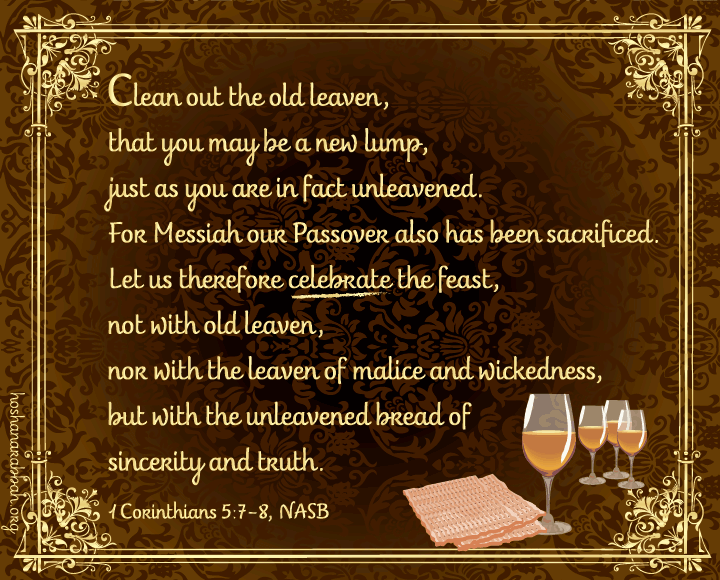
Acts 16:3, Circumcised him. Evidently circumcision or uncircumcision wasn’t an issue for Paul. He had Timothy, who was half Jewish, circumcised, but not Titus who was non-Jewish (Gal 2:3). Both men were elders and teachers in the assembly of believers. Both men as Torah-obedient individuals would have kept the biblical feasts including the Passover, which according to the law of Moses required all men to be circumcised.
To have Timothy, who was half Jewish, circumcised was more expedient for the preaching of gospel to the Jews, so as not to be a stumbling block to the Jews who had a high view of circumcision. This type of circumcision was acceptable, since it was not done as a salvation requirement for Timothy.
Now let’s discuss the Torah requirement that all male children be circumcised on the eighth day (Lev 12:2–3) and males keeping Passover be circumcised (Exod 12:48). Is physical circumcision now irrelevant, or was Paul rejecting the Torah on this issue?
First, in Ezekiel’s descriptions of the presumed millennial temple, all men entering that temple will be circumcised both in flesh and heart (Ezek 44:9). In YHVH’s eyes, those entering it who are uncircumcised are defiling it (v. 7). Obviously, to YHVH, physical circumcision is a holiness issue, though not a salvational issue (as the Jerusalem counsel ruled in Acts chapter 15). So there is still a place in YHVH’s spiritual economy for physical circumcision. Physical circumcision (in addition to heart circumcision) shows a higher level of obedience and holiness, not a lower level of obedience on a person’s part.
Second, the law of Moses stipulates that all men be circumcised in order to keep the Passover (Exod 12:48).
Though slightly tangential to this brief discussion on circumcision, knowing the following history is essential to understanding the contextual background of the biblical commands on circumcision and how they relate to us today. Suffice it to say, the law of Moses (as opposed to the greater Torah or the eternal principles thereof) was the administrative arm of the greater Torah that pre-existed the written Torah, which the Bible refers to as “the law of Moses.” The latter was like a constitution that governed the physical nation of Israel. The law of Moses or the written Torah contained rules and guidelines needed for a nation to function properly. This included a complete legal code with penalties, a judicial system, an educational system, a religious system, a taxation system, laws regulating health and hygiene, agricultural laws, civil laws and more. All of this was administered by the priests and tribal elders of that nation.
For the nation of Israel to protect its spiritual and physical integrity, Moses had to protect it from foreign or pagan defilement (like spiritual pathogens), which, if allowed entrance, could potentially lead to Israel’s apostasy and demise. The requirement to be circumcised in order to fulfill the Passover requirement was part of the law of Moses’ legal code for Israel, but was not a requirement of the greater Torah. Thus Paul in not making circumcision a legal requirement was appealing to the greater or higher requirements of the Torah where heart circumcision was the real issue.
Therefore circumcise the foreskin of your heart, and be stiff-necked no longer. (Deut 10:16)
And YHVH your Elohim will circumcise your heart and the heart of your descendants, to love YHVH your Elohim with all your heart and with all your soul, that you may live. (Deut 30:6)
At this point, please recall Yeshua’s Sermon on the Mount teaching, where he brings the letter and spirit of the YHVH’s Torah-law together, and teaches that it is necessary to obey both (Matthew chapters five through seven). Paul’s seeming inconsistency with regard to whether men should be circumcised or not may be due to the fact that he was focusing less on the legal requirements of the law of Moses, which was the administrative subdivision of the Torah, and which was enacted to keep the legal, spiritual and cultural integrity of that nation intact, and more on the greater and over-arching eternal principles of the Torah. In other words, the law of Moses (the Torah in a codified form with laws specifically addressing the needs of that physical nation in that time and place) and was Israel’s constitution. Here and by contrast, Paul is focusing more on the greater Torah or the eternal principles of the Torah that pre-existed Moses, than the written law of Moses. Moreover, when Paul came along, Israel was no longer a sovereign, physical nation that ruled itself, but a spiritual nation. It, therefore, was unable to follow all the specific legal requirements of the law of Moses (e.g., the implementation of the death penalty). Timothy being half Jewish and Titus being non-Jewish were both from Greek nations within the Roman Empire, and so some of the strict legal aspects of the law of Moses (e.g., circumcision for Passover and being cut off from Israel for not keeping Passover) could not and did not have be applied as long as the greater and more important principles of Torah (i.e., circumcision of the heart) were being kept.






